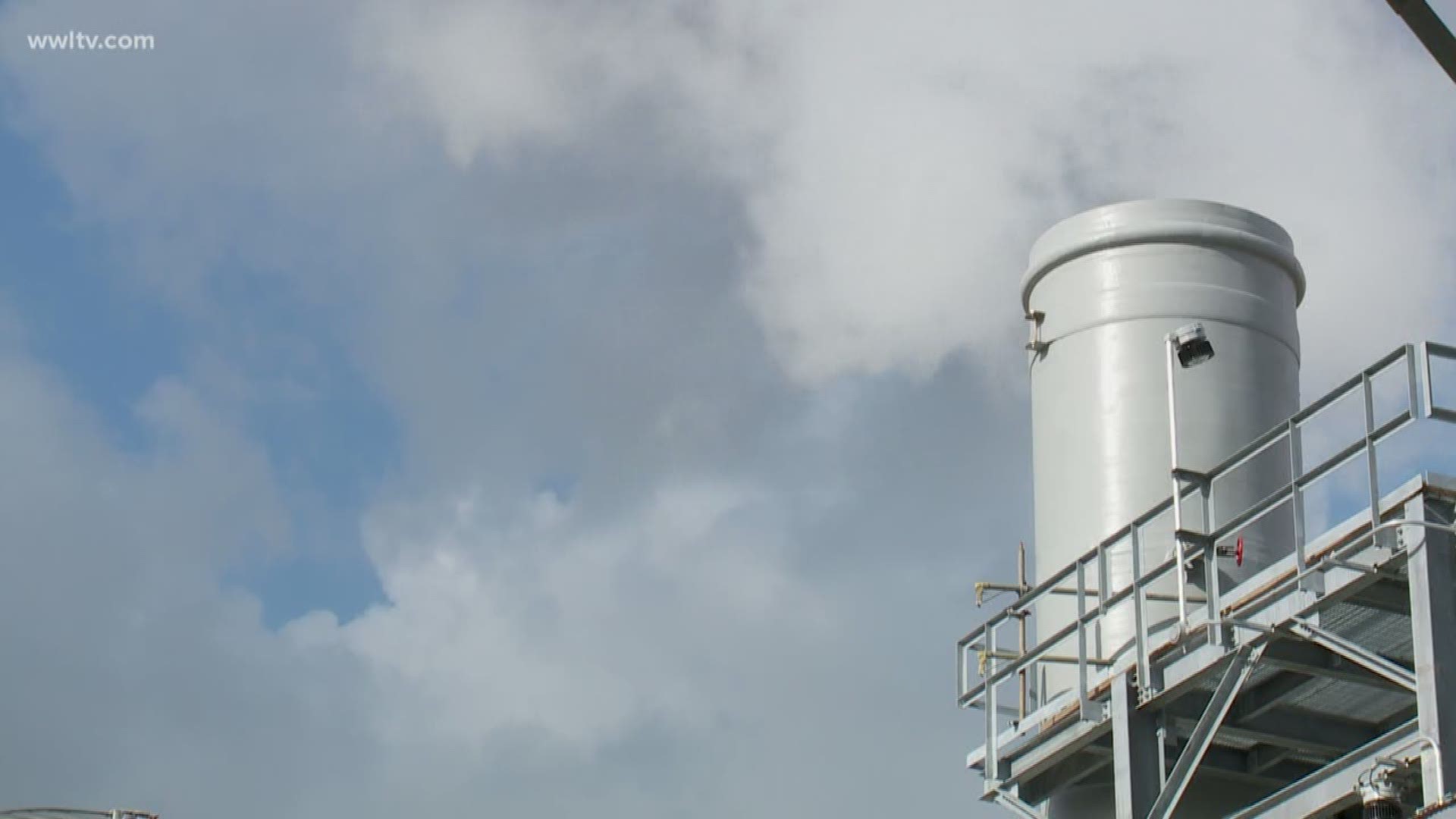LAPLACE – The St. John the Baptist Parish public schools superintendent said he’s tired of waiting on the state to curtail toxic emissions at a local chemical plant, and he credited a recent WWL-TV investigation with spurring him to act.
“First, we wanted to work with the (Louisiana Department of Environmental Quality) and the (Department of Health and Hospitals) and allow them to do their thing with (chemical plant owner) Denka to reduce emissions. But a couple of weeks ago, this very news station did a report, and that summoned me to go ahead and take action,” Superintendent Kevin George said, referring to WWL-TV’s February investigative series, “The Toxic Truth.”
“We’ve given the government entities the opportunity to act, and we don’t feel like enough has happened,” George said before hosting a special public forum Wednesday evening at Lake Pontchartrain Elementary School.
“The Toxic Truth” showed how the U.S. Environmental Protection Agency, in October 2015, found the five neighborhoods around the Denka Performance Elastomer chloroprene plant had the highest risk in America of getting cancer from breathing the air.
But the series also found that Denka disputed those findings and DEQ Secretary Chuck Carr Brown did not believe the chloroprene being emitted from the plant was dangerous, even though the EPA considers it a likely carcinogen.
In 2016, Brown secured an agreement from Denka to install equipment that would reduce chloroprene emissions by 85 percent. That agreement came shortly after the Japanese company purchased the plant from DuPont, the inventor of the synthetic rubber neoprene. It’s the nation’s only facility manufacturing neoprene.
The EPA established a concentration of 0.2 micrograms of chloroprene per cubic meter of air as an acceptable level of risk, but Denka argued that safe level should be set 156 times higher, at 31.2 micrograms per cubic meter.
“Denka Performance Elastomer continues to operate within permits written by the Louisiana Department of Environmental Quality and emits well below its allowed annual limits,” Denka said in a statement responding to Wednesday’s event. “In addition, the company has significantly reduced its emissions over the last year in response to community concerns about the chemical chloroprene created by a contested National Air Toxics Assessment report published by the U.S. Environmental Protection Agency less than a month after (Denka) purchased the facility in late 2015.”
Like Denka, Brown said he didn’t accept 0.2 as a standard for chloroprene. The DEQ secretary told WWL-TV in February he wanted to see what Denka could do with new emissions-reduction equipment before setting a state standard.
“Let me collect some more data, let me see exactly what we're getting out of the back end, then LDEQ and EPA will agree on a path forward,” Brown said.
But since Denka announced it had completely installed its emissions reduction equipment, the EPA has continued to measure high amounts of chloroprene at two public schools near the plant, Fifth Ward Elementary School and East St. John High School.
The highest level of chloroprene measured at the elementary school came on Feb. 6. It was 32.4 micrograms per cubic meter, 162 times the EPA-recommended level and even exceeding the standard proposed by Denka.
Still, that high reading was for a single day, and the standard is based on what is safe if breathed in over a lifetime. Denka says the average concentration levels have been going down and were at their lowest in February since EPA monitoring began in August 2016.
George, the school superintendent, now rejects Brown’s wait-and-see approach.
“That’s a problematic statement by saying we’re going to wait and see how low we can get it before we set an acceptable level. That’s unacceptable to us,” he said.
George said he and other school officials, including School Board President Ali Burl and Vice President Patrick Sanders, are growing alarmed by the findings of attorneys who filed suit last year trying to force Denka to shut down the plant. Lead attorney John Cummings said every neighbor whose urine they’ve tested is showing chloroprene in their system.
“It really is serious, I mean everyone in this room probably has chloroprene metabolites in their body,” Cummings said at Wednesday’s public forum. “Our expert says that.”
That has George joining the chorus that appears on the front of red T-shirts worn by the Concerned Citizens of St. John: “Only 0.2 will do.”
“And that’s not Kevin George saying that,” he said. “That’s the EPA saying that.”
Bobby Taylor, the head of the Concerned Citizens of St. John, spent the last two years frustrated by the lack of response from local government. But he’s glad the school board has finally changed its tune.
“I’m really elated to hear that,” Taylor said. “We have worked hard for that and now maybe we can make some progress.”

